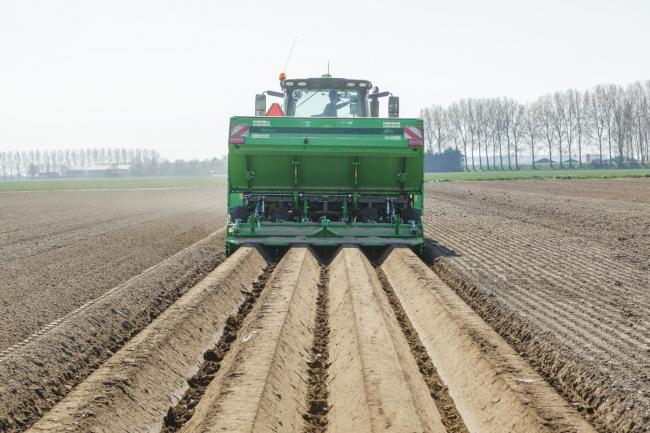New AVR Ceres 440 planting machine connects with the internet
Description
Usually, a new spring means a fresh start. In 2020, however, spring has been far from normal. Nevertheless, all players on the agricultural field are doing everything in their power to make sure everyone can count on a steady food flow. At AVR we are also doing our utmost, which is why the company has remained fully operational during the COVID crisis.
A new machine in the field: the AVR Ceres 440. The absolute highlight of the Ceres 440 is undoubtedly its AVR Connect system, which unites all planting information and remote parameters in one digital platform. Get ready for the next chapter in AVR’s precision farming story.
AVR Ceres 440
The AVR Ceres 440 is based on the Ceres 400. It’s a four-row mounted planter that is both available as a hydraulic and mechanical version. With the Ceres 440, AVR purposefully opts for ISOBUS control and a row-independent hydraulic drive. A wide bunker ensures smooth loading.

The Ceres 440 outperforms its smaller brother in every way:
The machine is controlled via ISOBUS, which means the operating screen of the GPS system or tractor can be used to control the planter (VT functionality). If required, a screen can optionally be supplied by AVR.
- Other functions are section control (TC-SC) and variable planting or fertilizing using task cards (TC-GEO). Once all data has been uploaded to the GPS system, the AVR Ceres takes care of the desired dosing quantities provided by the GPS system.
- In case of a hydraulically driven machine, each row is equipped with a separate hydraulic motor, which means:
- A reliable, fast and low-maintenance row stop system
- A row-independent planting distance, i.e. planting closer in the spray tracks as well as the following rows
- Large, serrated covering discs with a diameter of 510 mm
- The depth control wheels can be adjusted using a spindle that can be operated from the machine’s exterior for extra ease of use and operational safety.
- Further attention was payed to the adjustment of the agitator system, focusing on ease of access and precision. The agitator intensity can optionally be changed automatically depending on the inclination.
- Several versions of the Ceres 440 are available: a 1.5 tons fixed bunker or a 1.9 tons tipping bunker (4x75), with an optional ridging hood and/or anti-erosion kit.
AVR can also supply a powdering unit, granular applicator and spray system. - Optional connection using AVR Connect
Added value points using AVR Connect
The digital platform AVR Connect (previously known from the AVR Puma 4.0 harvester) is now also available on the Ceres 440 planter. This means that from now on, planting and harvesting can be geared to one another even more in the precision farming chain. Moreover, AVR will continue investing in this technology and developing it further. Existing features will be expanded and new functions will be added. AVR is also planning to apply this technology to other machine types.
Thanks to its algorithms and visualizations, AVR Connect offers the following advantages:
- Extensive and user-friendly field management:
- Importing a shape file, linking to government databases (e.g. land register), using own drawings, synchronizing with tractor brands (e.g. John Deere), etc.
- Extra info with field creation, such as variety, cut/uncut, size, amount of potatoes/ton, etc. This can for instance be useful when keeping a cultivation document.
- Activities are automatically linked to the loaded fields. The driver no longer has to perform any manual actions to indicate his position.
- The data can also be linked to the correct fields afterwards.
- Real time machine overview
- Field overview while planting (done/to do)
- Estimate the required or used amount of seed potatoes per field or in total (= number of tons/ha planted, via number/weight factor at field creation).
- Overview of the total number of hectares planted this season
- Last position and communication time
- Indication whether or not the machine is planting
- Field overview while planting (done/to do)
- Detail “As applied” information: Overview of the planter’s measurements in the field (e.g. planting distance, miss analysis, speeds, driving status, etc.)
- Real time overview of all technical settings, such as temperature, tractor speeds, consumption, etc. (if the tractor is connected via ISOBUS)
- Hectare counter per trip, field and total per season (based on GPS information)
- Remote tracking of alarms, alarm history and forwarding via SMS and/or email
- Filtering based on importance + alarm location
- Changing options remotely
- Remote detailed analysis options for a better service
- Geofencing zones (virtual delineation/perimeter of physical location using the GPS system) & alerting
- Mapping waiting times in the field
- Tracking tractor info when not planting (e.g. consumption, speed, etc.)
- External user management: The user can give others access to his platform and share data.












